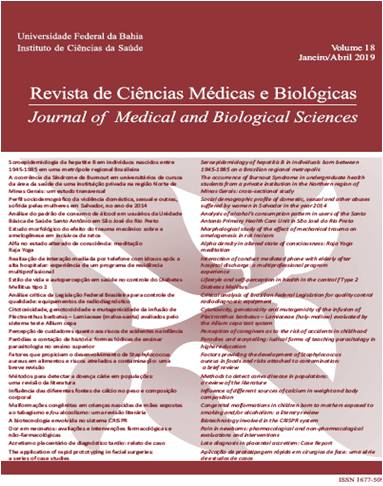The application of rapid prototyping in facial surgeries: a series of case studies
DOI:
https://doi.org/10.9771/cmbio.v18i1.26174Keywords:
Imaging. Three-dimensional. Tomography.Abstract
Aim: the aim of this paper is to report on the applicability of biomodels obtained from computerized tomography (CT) images through
the technique of stereolithography (SLA) and three-dimensional printing (3DP), in the clinical case reports of patients who underwent
surgeries involving dentoskeletal deformity, oral pathology and oral and maxillofacial trauma. Methodology: clinical case 01 deals
with fractures in the orbital and zygomatic arch region that required reconstruction and correction of diplopia, by means of CT
images, using the technique of three-dimensional printing through SLA, generating a mirrored biomodel for surgical planning and
the making of customized prosthesis. In clinical case 02, by means of CT images, a biomodel utilizing the 3DP technique showed the
total area invaded by invasive ameloblastoma, making it possible to plan the osteotomy with maximum preservation of the adjacent
tissue and prior modeling of the plate. In clinical case 03, rapid prototyping technology (RP) was used to make customized prosthesis
for temporomandibular joint, with the goal of correcting a serious idiopathic pathology provoking the resorption of the right and left
condyles. Discussion: complex cases require the team to have recourse to technology for the implementation of the procedures, in
order to offer excellent quality treatment to the patient, in addition to facilitating surgical planning and permitting the construction
of customized prostheses. Conclusion: the rapid prototyping for the acquisition of biomodels is an important auxiliary tool for the
surgical team.
Downloads
Downloads
Published
How to Cite
Issue
Section
License
The Journal of Medical and Biological Sciences reserves all copyrights of published works, including translations, allowing, however, their subsequent reproduction as transcription, with proper citation of source, through the Creative Commons license. The periodical has free and free access.


